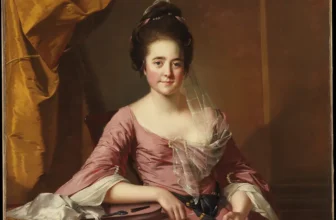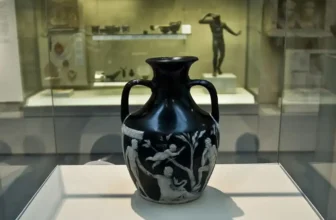Are Antique Oil Paintings a Good Investment Today
Investors are always looking for assets that combine value, beauty, and long-term appreciation. Stocks and bonds are staples, but in recent years, alternative investments like fine art have become more attractive. Among these, antique oil paintings have a unique charm , they are not only visually captivating but also historically significant.
But the real question is: Are antique oil paintings a good investment today?
In today’s topic, we’ll explore the pros, cons, and practical considerations of investing in antique oil paintings. You’ll learn how these timeless artworks fit into the modern investment landscape, what drives their value, and whether they are worth adding to your portfolio.
Understanding Antique Oil Paintings as an Asset
Before diving into profitability, let’s define what makes a painting “antique.”
Age: Typically, antique oil paintings are those created over 100 years ago.
Medium: Oil on canvas (or wood panel) is a classic medium, known for its durability and richness.
Cultural Value: Many antique oil paintings are linked to artistic movements like the Renaissance, Baroque, or Romanticism.
Historical Significance: They often carry historical stories, depicting eras, events, or prominent figures.
Unlike modern art, antiques are finite , no one can create a new 17th-century Dutch still life. This scarcity underpins their long-term value.
Why People Invest in Antique Oil Paintings
Antique oil paintings appeal to both collectors and investors for several reasons:
1. Scarcity and Exclusivity
Antique oil paintings are limited by time. The number of works from past centuries is fixed, and many have been lost or destroyed. This natural scarcity means demand can remain strong, especially for works from renowned schools or artists.
2. Tangible Asset with Intrinsic Beauty
Unlike stocks or crypto, a painting is something you can hang on your wall. Investors often value the enjoyment factor , living with art enhances quality of life while the asset appreciates.
3. Hedge Against Inflation
Physical assets like art often hold value during inflationary periods. A rare painting will not depreciate because of currency shifts; its value is tied to collector demand.
4. Global Market Appeal
Art is universal. Collectors from Europe, North America, and Asia all compete for masterpieces at auctions, making antique paintings a truly global investment.
The Current Art Market: Is It Still Booming?
The art market has evolved significantly in the last two decades. Let’s look at today’s landscape.
High Auction Results: Paintings by Old Masters and notable schools continue to fetch millions at Sotheby’s and Christie’s.
Emerging Buyers: Wealthy millennials and Asian collectors have entered the market, driving up demand.
Digital Cataloging: Auction houses now offer hybrid online sales, increasing accessibility.
Market Resilience: Despite economic downturns, fine art often bounces back quicker than traditional investments.
However, not all antique oil paintings are skyrocketing. Market growth is selective , well-documented, high-quality works perform best, while lesser-known pieces may stagnate.
Pros of Investing in Antique Oil Paintings
Here are the top benefits:
1. Long-Term Appreciation
The value of rare antique oil paintings tends to grow over decades. Unlike trendy modern art, centuries-old works have a track record of resilience.
2. Portfolio Diversification
Investors diversify to reduce risk. Adding art to a portfolio alongside real estate, stocks, and gold can stabilize long-term returns.
3. Legacy and Prestige
Owning antique paintings elevates social status. Many collectors see it as a form of legacy, something to pass down to heirs.
4. Emotional and Cultural Value
Beyond money, these works carry emotional satisfaction. You’re preserving a piece of history and culture.
Cons and Risks of Investing in Antique Oil Paintings
No investment is risk-free. Antique art comes with challenges:
1. High Entry Cost
Authentic antique oil paintings are expensive. While smaller works may be affordable, masterpieces can cost millions.
2. Lack of Liquidity
Selling a painting isn’t as simple as selling stock. It can take months or years to find the right buyer.
3. Authentication Challenges
The art market has long battled issues with forgeries and misattribution. Provenance (ownership history) is crucial.
4. Maintenance Costs
Paintings require proper storage, climate control, and sometimes restoration, which can be expensive.
5. Market Volatility for Lesser Works
While masterpieces hold steady, mid-tier antique oil paintings may not appreciate significantly.
How to Evaluate Antique Oil Paintings for Investment
If you’re considering entering the market, here’s what to look for:
1. Provenance
Documentation of ownership history.
Auction house or gallery sales records.
Certificates from trusted experts.
2. Artist Reputation
Works by known Old Masters (Rembrandt, Rubens, Goya) are blue-chip assets.
Lesser-known artists can still be valuable if linked to a significant school.
3. Condition and Restoration
Paintings in original condition often fetch higher prices.
Over-restoration can diminish value.
4. Rarity and Subject Matter
Unique subject matter or historically important themes tend to attract buyers.
Portraits of notable figures often command premiums.
5. Market Trends
Track recent auction results for similar works.
Study which regions or artistic movements are gaining interest.
Where to Buy Antique Oil Paintings
Auction Houses
Christie’s, Sotheby’s, Bonhams , trusted and transparent, though competitive.
Art Galleries
Provide curated collections with expert guidance, but may charge higher commissions.
Online Marketplaces
Platforms like Artsy, 1stDibs, and online auction portals. Exercise caution and verify authenticity.
Private Sales
Direct from collectors or estates. Can offer better prices but require expert vetting.
Tips for First-Time Investors in Antique Oil Paintings
Start Small: Don’t jump into million-dollar auctions. Begin with mid-range paintings to learn the market.
Consult Experts: Art advisors, appraisers, and curators can help you avoid costly mistakes.
Prioritize Quality Over Quantity: One exceptional piece is better than several mediocre ones.
Think Long-Term: Treat antique oil paintings as a generational investment.
Insure Your Artwork: Protect your asset from theft, fire, or damage.
Are Antique Oil Paintings Right for You?
Antique oil paintings are not for every investor. They suit:
Collectors with Passion: Those who genuinely appreciate art.
Wealthy Investors: Individuals who can afford to tie up capital long-term.
Diversifiers: People seeking alternatives beyond stocks and bonds.
Legacy Builders: Families interested in passing down valuable heirlooms.
If you’re looking for fast liquidity or short-term profits, the antique art market may not be ideal.
Case Studies: Famous Antique Oil Painting Investments
Leonardo da Vinci’s Salvator Mundi
Purchased in 2005 for around $10,000 (believed to be a copy).
After authentication and restoration, it sold in 2017 for $450 million.
Van Gogh’s Portrait of Dr. Gachet
Sold in 1990 for $82.5 million.
The painting has since increased in cultural and financial significance.
Dutch Golden Age Paintings
17th-century works once overlooked are now steadily appreciating, especially in Asia.
These examples show the potential upside, though they represent rare cases of blockbuster returns.
Comparing Antique Oil Paintings with Other Alternative Investments
| Asset Type | Pros | Cons |
|---|---|---|
| Antique Oil Paintings | Scarce, cultural value, long-term appreciation | High cost, illiquidity, maintenance |
| Contemporary Art | Lower entry costs, trendy demand | Market volatility, uncertain longevity |
| Gold | Liquidity, inflation hedge | No aesthetic or cultural value |
| Real Estate | Rental income, tangible asset | Market cycles, management required |
| Cryptocurrency | High liquidity, growth potential | Extreme volatility, regulatory risk |
For investors seeking both tangible beauty and long-term value, antique paintings stand out.
FAQs on Antique Oil Paintings as an Investment
Are antique oil paintings a safe investment?
They can be safe if purchased from reputable sources with proper authentication. However, like any asset, risks exist.
Do antique oil paintings always increase in value?
Not always. Masterpieces and historically significant works tend to appreciate, while mid-tier works may plateau.
How do I know if an oil painting is valuable?
Check for provenance, artist reputation, condition, and recent market demand. Consulting an expert is essential.
Can beginners invest in antique oil paintings?
Yes, but it’s wise to start small, work with advisors, and focus on learning the market first.
What is the minimum investment for antique paintings?
Quality antique oil paintings can start in the low thousands, but truly investment-grade works usually cost much more.
Final Verdict: Are Antique Oil Paintings a Good Investment Today?
Antique oil paintings remain one of the most prestigious and historically significant investments available. Their scarcity, cultural value, and potential for appreciation make them attractive for collectors and wealthy investors seeking long-term gains.
However, they are not liquid, require careful authentication, and demand substantial initial capital. For those with the means and patience, they can serve as both a financial asset and a cultural treasure.
In today’s diversified investment landscape, antique oil paintings are a good investment for the right type of investor , someone who values both art and legacy as much as financial returns. image / getty




